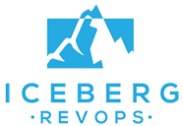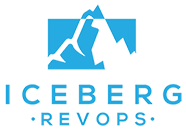Last week, we were invited to participate in a webinar hosted by our friends at Modern Sales Pros about how to make sure your users are able to easily adopt and implement Salesforce changes.
Iceberg’s Head of Operations, Taft Love, joined Melanie Fellay, the CEO of Spekit, to discuss how smart revenue leaders can get the most out of your investment in Salesforce and other software.

When it comes to designing your CRM in an optimal way, there are some initial principles to keep in mind.
“Your CRM is a reflection of your business processes,” Melanie said, recommending you whiteboard your current workflows before adding this to Salesforce.
Centered around keeping your instance clean and understandable, there are some best practices that can help your team better navigate Salesforce. One of these practices is maintaining consistency in page layouts from. This is particularly important when making the switch from Classic to Lightning, Taft pointed out — when layered on to a new system your team is trying to learn, navigating pages that have different set-ups can be cumbersome (and discourage users from entering data properly).
Another helpful change is customizing the individual user’s homepage, Melanie recommended. This helps users keep it simple, and focus on what’s most important for them.
One thing that a lot of companies skip is user-testing — how a user will interact with what you’ve designed. According to Taft, this is a low cost and high impact way to ensure that changes make sense to end users.
Simply taking the time to watch your users interact with your Salesforce can be incredibly revealing. It can reveal how your user-friendly your set-up actually is. This can also help you identify quick wins, Melanie said — and figure out how to be the most impactful with small changes to make your system even easier to use.
“Simplicity takes planning,” Taft agreed.
However, once you’ve figured out the optimal setup for your company, how do you encourage reps to utilize the system you’ve developed?
The first, of course, is to make sure it’s actually set up brilliantly — because as the adage goes, if it’s not in Salesforce, it doesn’t exist.
Communication is also key, Melanie noted.
“People don’t want to listen to ops constantly because they don’t get why it’s complicated,” she said.
If you’re creating additional work for users, it won’t be helpful. Instead, find users as a resource. Ask how you can make their lives easier — which has the dual advantage of making people feel heard but also recognizing what’s meaningful to them, Melanie pointed out.
Use this relationship to turn a few select users into champions to advocate for you. Plus, they can reflect on what your communications are lacking. What are people missing?
Keeping users up to speed is a common place where communication breakdown happens. Ask yourself whether people understand the changes, and whether they’re incentivized to care, Taft recommends.
“I like rewarding performance, not compliance,” Taft said. However, he acknowledged that there may be necessary scenarios to incentivize good behavior around critical actions like Salesforce practices.
“I don’t want to reward people to do their jobs,” Melanie agreed, reflecting that good ops should be convenient and clear.
To help leadership understand their funnel properly, it’s important that critical information is provided at different stages.
“Operationalize chokepoints,” Taft advised. This will create more visibility by requiring certain information for a deal to move forward. This means creating clean operations for bottlenecks in your funnel. A prime example is the handoff between SDRs and Account Executives.
However, both presenters have seen cautionary tales of companies over-customizing as they grow and scale. In order to help avoid this, there should be a clear plan for each change. You can start by making a few lists: what fields are actually used, who is impacted with each change, major stakeholders to be aware of (double-check and make sure you haven’t missed anyone!), and what users need to know about the “why.”
“You have to have a source of truth, ironically, in order to build your Salesforce, which is your source of truth internally,” Taft said. Figure out what you’re doing and who is clearly responsible — and make sure it’s written down — before you start anything.
“If someone isn’t bought in, it doesn’t matter how easy you make Salesforce,” Melanie said. “Focus on the why.”
Once you’ve established a plan, thoroughly scope out your options for changes, including the possibility of looking externally. Don’t try to reinvent the wheel when you can use a tool that’s already been created. Before you say, “Oh, we can build that” — see if someone else has first. Plus, some of these tools are free!
Finally, maintain the right supporting documentation — it’s very important to create documentation for user reference. While institutional knowledge is valuable, it’s also fleeting.
See the complete webinar for free. If you’re curious to learn more about some of the tactics and strategies Taft mentioned, reach out!


